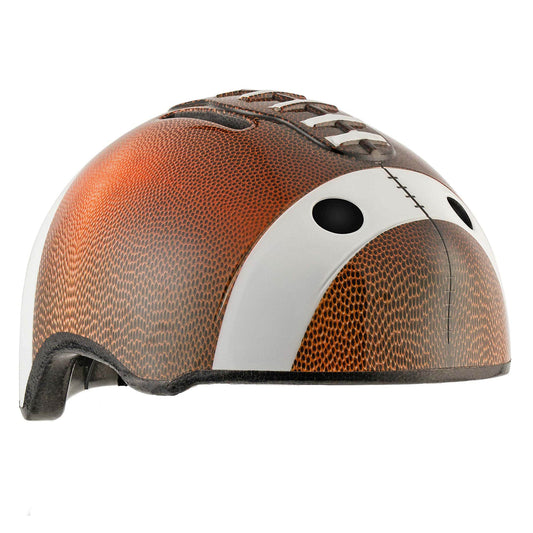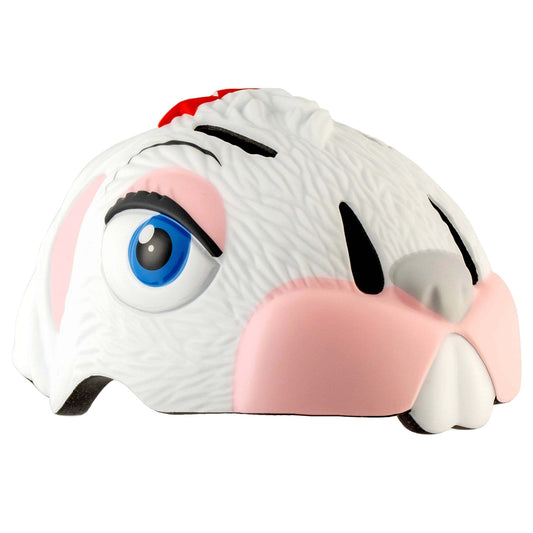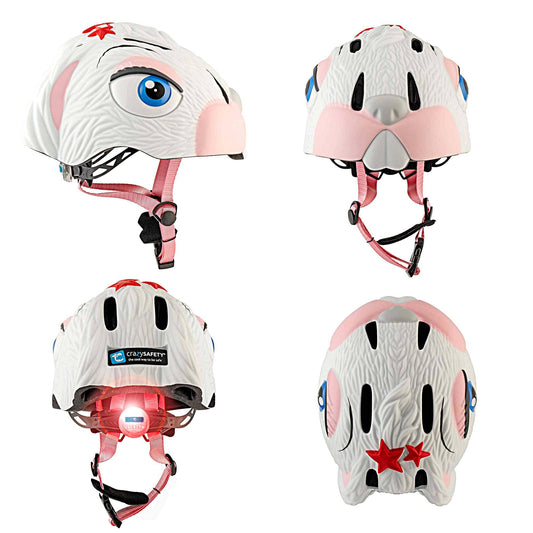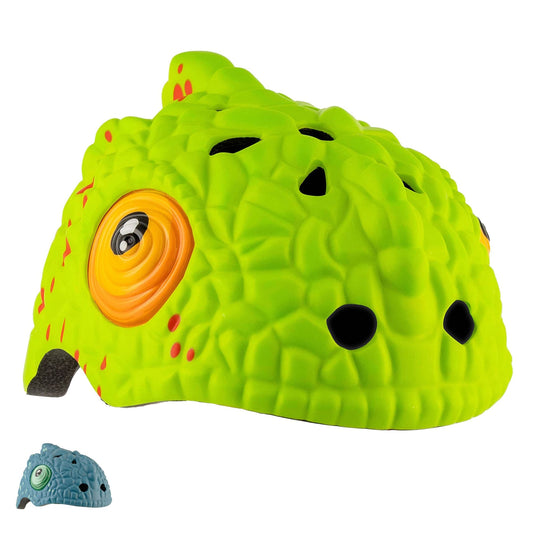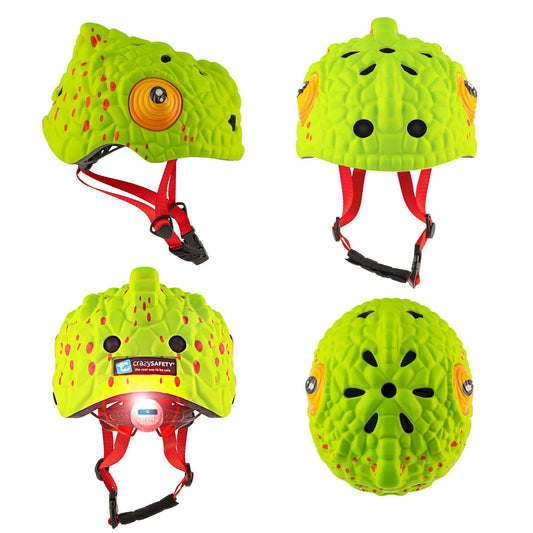Are you wondering what bike helmet size you need to buy for your child? You're not alone! It can be tricky to figure out which kids helmet to choose, but we're here to help. In this blog post, we'll give you some tips on how to measure your child's head and find the right size for their bike helmet. Keep reading to learn more!
Are you wondering what bike helmet size you need to buy for your child? You're not alone! It can be tricky to figure out which kids helmet to choose, but we're here to help. In this blog post, we'll give you some tips on how to measure your child's head and find the right size for their bike helmet. Keep reading to learn more!
Choosing the Right Kids' Bike Helmet: It's All About Head Circumference, Not Age
When it comes to choosing a bike helmet for your child, age is not the most important factor to consider. Instead, the circumference measurement of your child's head is what truly determines the right size helmet.
It's common for parents to wonder which size helmet is appropriate for their child based on their age, such as "What size bike helmet does a 3-year-old need?" or "What size helmet should I choose for a 5-year-old kid?" But the reality is that every child's head is unique and can vary significantly in size, even between children of the same age.
By measuring your child's head and choosing a helmet that fits their specific head circumference, you can ensure that the helmet provides maximum protection and comfort for your child during their rides.
So don't rely solely on age when selecting a kids' bike helmet. Instead, take the time to measure your child's head and choose a helmet that fits properly based on that measurement. Your child's safety is worth it!
How to measure your child's head for a bike helmet?
When it comes to your child's safety while riding a bicycle, a properly fitted bicycle helmet is a must-have. Kids' helmets are based on the circumference measurement of the child's head rather than simply age. The first step in making sure your child has the right helmet size is knowing your child's head circumference. So, let's go through the simple process of measuring your child's head for a bike helmet.
- First things first, grab a soft measuring tape. You want to make sure the tape measure is flexible so that it can easily wrap around your child's head without causing any discomfort.
- Next, have your child stand with their head straight, looking forward, and measure the circumference of their head by wrapping the measuring tape or string around the widest part of their forehead, just above their eyebrows.
- Make sure the tape measure is level all the way around their head. Write down the measurement, and voila! You now have the circumference of your child's head.
If you dont have a flexible tape measure, use a cord or thread to measure the thircumference and then measure it. Note the measure in Cm. That is the Helmet size for your kid bike helmet.
Don't underestimate the importance of a properly fitted bike helmet. Not only does it ensure maximum protection, but it also makes for a more comfortable and enjoyable ride. By taking the time to measure the head circumference, you can save yourself the hassle of having to constantly purchase a new helmet because of a poor fit, instead invest in a helmet that will last until they outgrow it.
How to Choose the Right Kids Bike Helmet for your child based on their head measurement
Now that you have the measurement, it's time to find a helmet that fits properly. Helmet sizes can vary from one brand to the other. Different helmet brands have different helmet sizing charts, so it's always best to check the manufacturer's guidelines online or on the label to ensure the helmets fit perfectly.
As a reference here you have some of our helmets sizes measurements:
- Animal Bike helmets for kids - 49 to 55 cm usually fit kids around 2-7 years old.
- Cool bike helmet for children - 54- 58 cm usually fit kids around 6 to 12 years old.
- Adult bicycle helmet we have two sizes available on most of our helmets, M (54-58cm) and L (58-61cm).
Always check the size or chart of the specific helmet you want to buy! By getting the correct size for your child, they will be well protected and comfortable during their rides.
How to fit a bike helmet for a child
Adjusting a bike helmet to fit your child's head properly is important to ensure maximum protection and comfort while riding. You can see our step by step video and follow the next instructions for the perfect fit:
- Place the helmet on your child's head. Always wear the helmet straight, not leaning forward or tilted backward. The helmet should sit about two finger widths above the child's eyebrows.
- Make sure the ear straps are placed equally around the ear forming a Y shape.
- Adjust the size by turning the dial - Most Kids helmets have an adjustable size.
- Fasten the chin strap, making sure it has snug fit but not too tight. The ideal is 1 finger between the strap and the chin.
- Have your child move their head around, tilt it from side to side, and nod their head up and down to make sure the helmet stays in place and doesn't interfere with their vision.
- If the helmet is still too loose, adjust the straps again or consider purchasing a smaller size helmet.
By properly adjusting the bike helmet, you can ensure a comfortable and secure fit for your child. Remember to periodically check the fit of the helmet and make adjustments as needed, especially if your child is growing quickly. Also pay special atention when fitting a new helmet for the first time. Chin straps and side straps might need to be adjusted several times before getting the right fit.
Why it's important to have the right sized bike helmet for your child
Bike helmets can vary a lot from one brand to the other, and even between designs of the same helmet brand. Having the right size for your child bike helmet is crucial for ensuring their safety while riding. Here are a few reasons why:
Proper fit provides maximum protection: A properly fitted helmet should fit snugly and securely on your child's head to protect it in the event of an accident. An ill-fitting helmet can come off or shift during a crash, reducing its effectiveness and potentially causing more harm.
Comfort: A well-fitting helmet should be comfortable for your child to wear, allowing them to focus on the ride instead of the discomfort. A helmet that's too loose or too tight can cause discomfort, headaches, and even discourage your child from wearing it.
Vision: An ill-fitting helmet can obstruct your child's vision, making it difficult to see obstacles and making them more vulnerable to accidents.
Long-term savings: Investing in a properly fitting helmet for your child can save you money in the long run by ensuring that the helmet lasts until they outgrow it, rather than needing to purchase a new one every few months because of a poorly fitting helmet.
Encourages helmet use: When your child has a comfortable and well-fitting helmet, they are more likely to wear it regularly, promoting the importance of helmet use and keeping them safe.
By making sure your child has the right sized bike helmet, you can give them the best protection and comfort while they enjoy their rides. It's a small investment that can have a big impact on their safety. And, if you haven't already, definitely check out our previous blog post, "How Do I Choose the Best Bike Helmets for Kids?" where we've gathered the best advice and all the information you need to find the right bike helmet for kids.
We hope this blog post has helped you understand how to measure the head circumference of your kid to choose the right bicycle helmet and the right helmet size. Remember: safety always comes first! So make sure to get the right size bike helmet for your child, fit it correctly and start enjoying the outdoors together!



